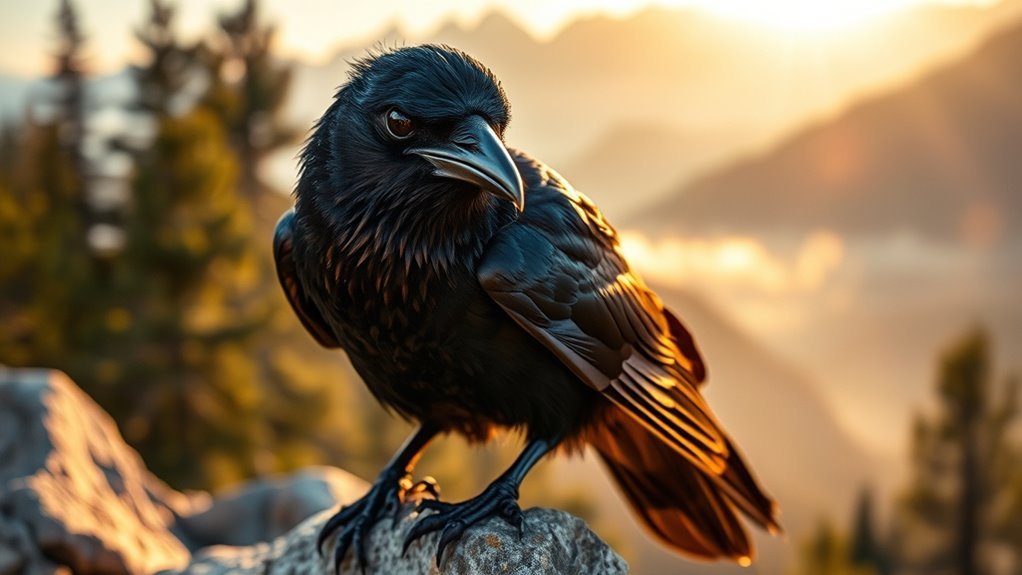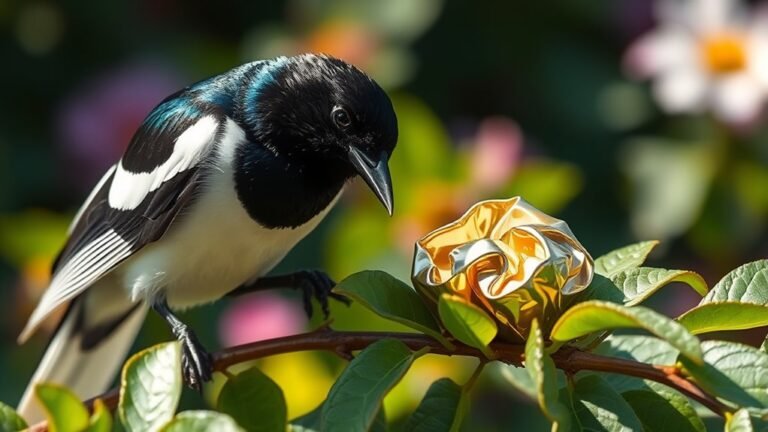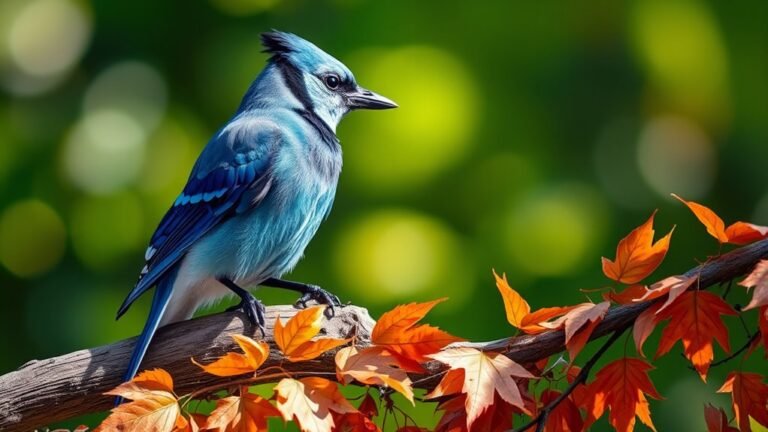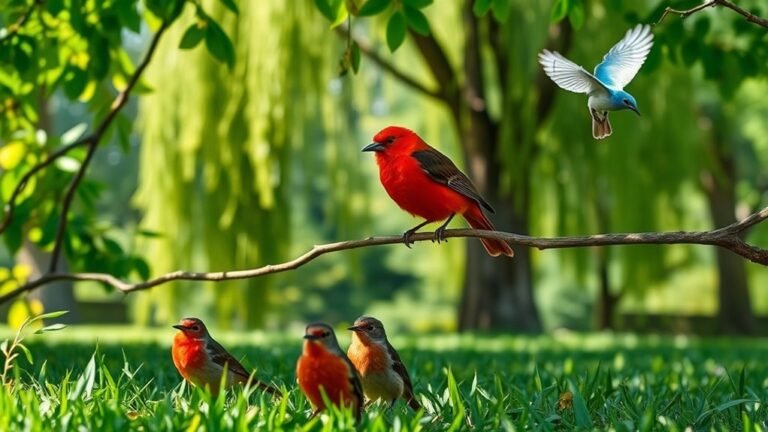Exploring the Fascinating World of Ravens
Have you watched a raven in nature? These birds have black feathers, but they are much more than that. They show high intelligence and strong social skills. Ravens solve problems and find food in unique ways. Their communication systems are interesting and complex. This makes us think about the myths and stories that influence how we see these amazing birds. Let's explore the facts about ravens together.
Key Takeaways
- Ravens display remarkable intelligence with problem-solving skills and tool use, showcasing their cognitive abilities.
- They form complex social structures, exhibiting strong community ties and playful behaviors that strengthen their bonds.
- Communication among ravens is sophisticated, utilizing various sounds and gestures to convey important messages within their groups.
- As adaptable scavengers, ravens play a crucial role in ecosystems by recycling nutrients and influencing food chain dynamics.
- Increasingly thriving in urban environments, ravens demonstrate adaptability and cleverness, leading to unique interactions with humans.
The Intelligence of Ravens
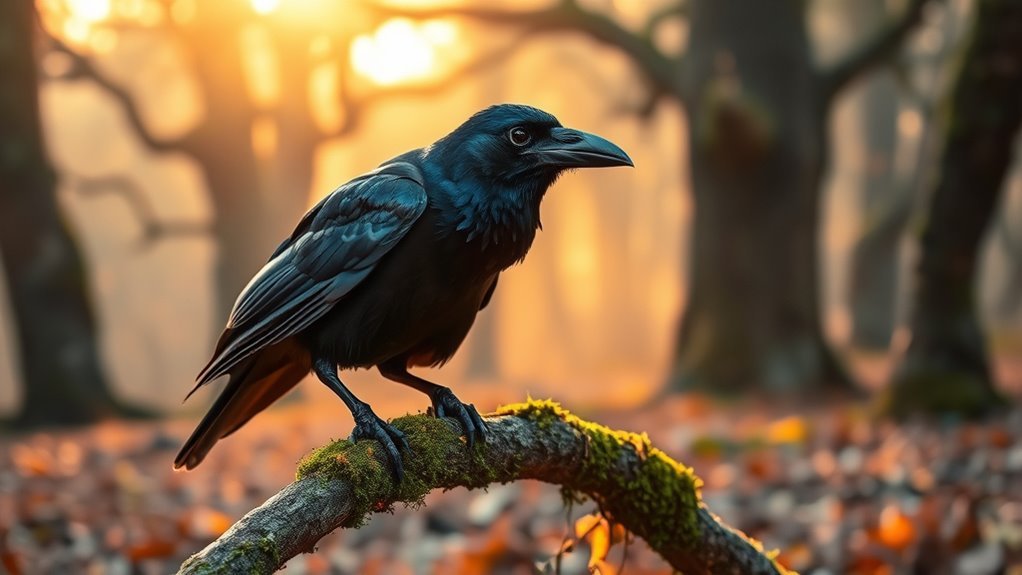
Ravens may appear to be simple scavengers, but they show impressive intelligence. These birds can solve problems and adapt to new situations easily. For example, they can use tools, like bending sticks to get insects from crevices, showing their cleverness.
Ravens also learn from each other. They watch what other ravens do and copy successful actions. This social learning helps them work together and improves their skills for survival.
As you observe these amazing birds, you can truly appreciate how they function in their environment. Their intelligence and ability to adapt are far more complex than you might expect from scavengers.
Social Structures and Community Life
Ravens show strong community ties through their social structures. These birds create social hierarchies, with dominant members leading the group. Their relationships rely on mutual support and cooperative behaviors, which help them survive.
They practice communal roosting, gathering in large groups for warmth and safety, strengthening their social bonds.
When you watch ravens, you can see their playful behavior and intricate rituals that highlight their shared identity. They learn from each other and manage community dynamics effectively.
This creates a vibrant life that reflects human social experiences. Their interactions remind us of the importance of connection and belonging in any community.
Communication Skills: A Language of Their Own

Ravens have strong communication skills that help them work together as a group. They use different sounds, like soft coos and loud caws, to share important messages. These calls can indicate danger or let others know where food is.
Ravens also use their beaks to point or move objects to express ideas. Watching these behaviors shows how important communication is for their social bonds and cooperation. Their way of communicating reveals the strong connections they've with each other.
Problem-Solving Capabilities
Ravens are known for their impressive problem-solving skills. They can create tools from twigs to reach insects in tight spaces.
Observing ravens reveals they do more than just use tools; they plan ahead and think critically. In memory tests, ravens remember where they hide food and who might try to steal it. This intelligence shows how social and adaptable they are.
As you watch them, you can appreciate their cleverness and resourcefulness, highlighting their unique abilities.
Ravens in Mythology and Folklore

Ravens play an important role in mythology and folklore across many cultures. They often represent wisdom, transformation, and mystery. These intelligent birds appear frequently in stories, serving as messengers or sources of deep understanding.
In Norse mythology, Odin's ravens, Huginn and Muninn, stand for thought and memory. This symbolism highlights their importance in myths.
In Native American traditions, ravens represent both creation and trickery, revealing their multifaceted nature.
As you explore these tales, you can see how different cultures express their values and beliefs through the image of the raven.
These narratives offer connections to the wisdom found in myths. Ravens, with their rich stories, encourage a sense of belonging and fascination for those interested in these enigmatic creatures.
The Role of Ravens in Ecosystems
Ravens are adaptable scavengers that significantly impact their ecosystems. They thrive in various environments, feeding on small animals and dead matter. By eating carrion, they help limit disease spread and recycle nutrients. Ravens influence the populations of prey and competitors in the food chain.
These intelligent birds communicate effectively and often work together. This behavior aids their survival and benefits other species around them. By fulfilling their role in the ecosystem, ravens enhance biodiversity and create a sense of balance in their habitats.
Observing them can be enjoyable and rewarding, making them fascinating subjects for nature lovers.
Nesting and Breeding Habits
Ravens build their nests high in trees or on cliffs. Their nests consist of sticks, mud, and sometimes discarded items, showing their ability to adapt.
During breeding season, ravens perform mating rituals to strengthen their pair bonds. They defend their nesting sites with strong territorial behavior.
After the eggs hatch, both parents care for the nestlings, sharing feeding and protection duties. This cooperation supports their young and builds strong family ties.
Watching these behaviors helps you appreciate the life of ravens and their interesting habits.
Diet and Foraging Techniques
Ravens have a diverse diet and are skilled foragers. These intelligent birds can adapt their foraging strategies to find food.
They eat insects, small mammals, fruits, and carrion. Ravens often follow larger animals to scavenge leftover meals, showing their smart use of available resources.
When food is low, they can hide food for later, known as caching. Observing these behaviors highlights their intelligence and their role as opportunistic feeders in the ecosystem.
Their ability to find food in various ways showcases their resourcefulness.
The Impact of Human Interaction
As cities grow, humans and ravens interact more frequently.
These smart birds adapt well to urban life. They find food scraps and thrive in cities. When you see them in parks or on buildings, you witness their cleverness and their connection to us. Their calls and movements add vibrancy to the urban setting.
However, it's important to remember our role in this interaction. We should respect their wild nature and find ways to coexist peacefully as they adapt to our presence.
Research Studies on Raven Behavior
Ravens show a wide variety of behaviors that highlight their intelligence. Researchers study these behaviors to learn about their thinking and adaptability.
Here are four key findings from their research:
- Ravens use tools, like sticks, to pull insects out of tree bark.
- They can deceive other birds to protect their food sources.
- Ravens plan ahead by hiding food for later use.
- They learn from each other by watching and copying successful foraging methods.
These findings reveal how clever and resourceful ravens can be in different situations.
Their ability to solve problems and work together makes them one of the most interesting birds to study.
Observing Ravens in the Wild
How can you observe the social behavior of ravens in the wild? First, choose a quiet location where ravens typically gather, like cliffs or forests. Watch how they interact with each other. Notice their playful behavior as they chase one another and communicate through various calls.
Ravens build strong relationships. They show loyalty by grooming each other and sharing food. Sometimes, you might see them stealing food, which indicates their social order.
Pay close attention to their body language. Look for wing flaps and movements that reflect their mood and intentions. Experiencing this moment connects you to nature and helps you feel a part of the environment around you.
Enjoy watching these intelligent birds and their fascinating interactions.
Frequently Asked Questions
What Is the Lifespan of a Raven in the Wild?
Ravens in the wild typically live between 10 to 15 years. Their lifespan can change based on their diet and environmental conditions. Ravens are known for their intelligence and resourcefulness, which help them survive in various situations. Observing them can be quite fascinating.
How Far Can Ravens Fly in a Single Day?
Ravens can fly up to 50 miles in a single day. They show strong flight abilities and adapt well to different environments. Ravens travel long distances to find food and suitable homes. Their ability to cover these distances makes them fascinating birds in the wild.
Do Ravens Have Any Natural Predators?
Ravens have few natural predators. Their intelligence and adaptability help them survive. Ravens often use teamwork to hunt and stay safe. They have sharp awareness that allows them to detect threats quickly. These traits ensure their ongoing survival in the wild.
Are Ravens Monogamous in Their Relationships?
Ravens are monogamous animals. They choose a mate and form strong bonds during courtship. These pairs interact playfully and work together to build nests. This teamwork strengthens their relationship and creates a sense of community within their group. Ravens are social creatures, and their connections with one another foster loyalty and support within their flocks.
How Do Climate Changes Affect Raven Populations?
Climate change affects raven populations by changing their habitat and food sources. These birds adapt well to new conditions, showing their resilience. However, changes in their numbers can create difficulties for their survival and reproduction.

Hello, I’m Emily Price, the founder of Birds Affection. As a passionate bird enthusiast and spiritual seeker, I’ve always been fascinated by the symbolic meanings and mystical connections between birds and our lives. On this website, I share my knowledge and insights on the spiritual significance of various bird species, exploring their roles as messengers, guides, and teachers. Through my writing, I aim to inspire and educate others on the profound wisdom and beauty that birds bring to our world. Join me on this journey as we delve into the enchanting realm of bird symbolism and discover the hidden meanings behind these magnificent creatures.

